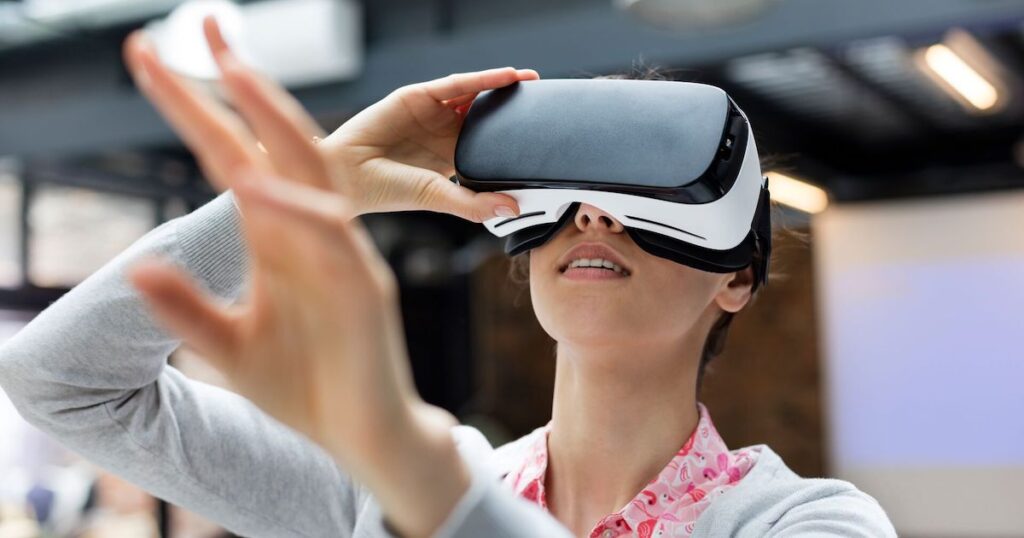During Thursday’s vMed 2023 conference hosted by Cedars-Sinai Medical Center in Los Angeles, speakers discussed medical extended reality’s place within mental healthcare and the risks and benefits associated with mental health treatment in the metaverse.
“I finished a 200-page report for the European Commission, and they wanted to know what the opportunities and challenges were as we move from virtual reality to XR health to the metaverse,” said Dr. Brenda Wiederhold, clinical psychologist and cofounder of the Virtual Reality Medical Center.
“I’m optimistic, but I will say I’m cautiously optimistic. We do need some oversight. We can’t have tech companies policing themselves always. I’m not a big government person, but I do think we have to have some rules in place.”
The future of medical extended reality (medical XR) must be built upon the successes and the failures of the past to move forward realistically, Wiederhold said.
“We’re putting [anxiety] patients into the environment. We’re having them confront what they’re afraid of, change that physiological response, that cognitive response, having them confront those emotions and then having them do behavioral change so that they can translate that and no longer have that fear or phobia in the real-world setting,” she says.
The VR experience differs for each individual, meaning emotional processing by patients using the modality will vary, as will individualized long-term efficacy.
“It’s good if you learn something in VR, but if you don’t use that in the real-world setting, it’s not so great,” said Wiederhold.
Still, VR is a tool for providers to use, not a replacement for the provider. Specifically, studies have shown VR’s benefit as a modality for behavioral activation, an approach to mental health that focuses on treating depression by understanding how behaviors influence emotions.
Dr. Margot Paul, a postdoctoral scholar of psychiatry at the Stanford School of Medicine, described how she and her colleagues at Stanford studied VR’s feasibility and clinical significance as an intervention for major depressive disorder.
“My study was done during the COVID pandemic, where people couldn’t get out and do things that they would normally want to do,” Paul said. “So if people could engage in pleasant activities, things that gave them a sense of pleasure, but just in VR, could that elicit the same mood responses as doing these activities in real life?”
Initial findings proved VR was clinically significant and feasible in decreasing participants’ major depressive disorder. Paul has since expanded the scope of the ongoing study.
Beyond efficacy, VR may improve access to mental health treatment when there’s a need for more mental health providers, said Skip Rizzo, psychologist and director of medical virtual reality at the University of Southern California Institute for Creative Technologies.
“We’re going to see a lot of stuff about how VR is making a difference in terms of measurable gains with our clinical populations, but I want to focus on breaking down barriers to care,” Rizzo said.
Rizzo highlighted the 25 years of science behind VR’s use in mental healthcare, showing that the modality alongside healthcare providers can make a difference in care outcomes. Still, he stressed access to mental healthcare that utilizes virtual reality is difficult.
Clinicians are vital in presenting the option of VR therapy to patients for widespread adoption, but there’s a need for medical providers to be trained in how to use VR for mental healthcare.
“You don’t see this in graduate schools, you don’t see specific coursework, maybe there’s a couple…but it needs to be a standardized thing so that young clinicians across all healthcare areas have some training and familiarity, not just with the clinical stuff, but how to use a headset and where to get it,” Rizzo said.
VR must appeal to providers and patients alike but simultaneously solidify the patient and provider relationship.
“The metaverse has value for making care available: Hide behind the avatar at first and talk to people that have the same problems you have, or a clinician. Reduce the stigma, and [it’s] maybe a solid thing for direct clinical care, making it accessible and available to more people,” Rizzo said.
“Still, we have to remember that a good part of the effect size and the clinical benefit comes from the therapeutic alliance with a human being.”

